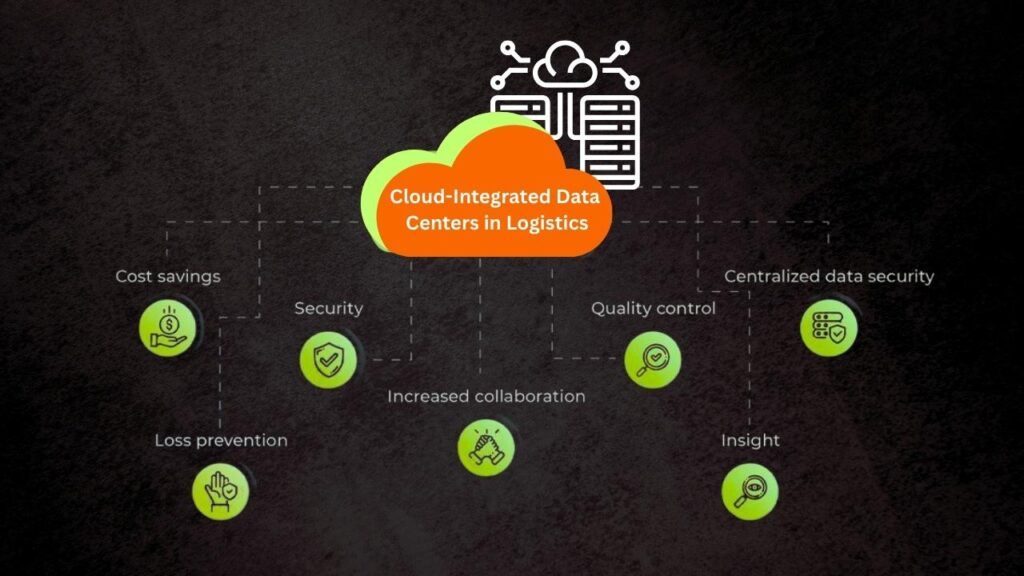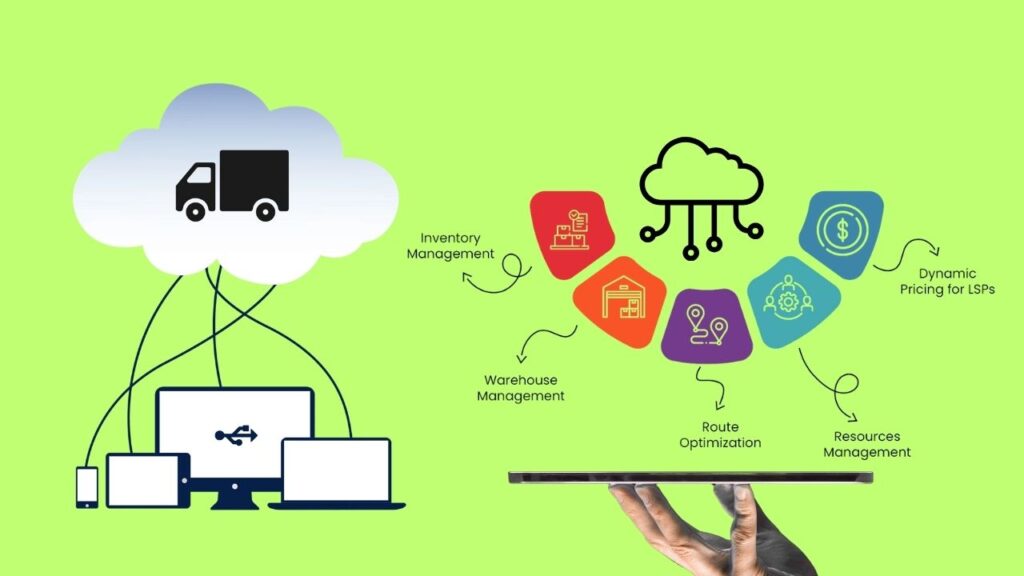In the ever-evolving world of logistics, cloud-integrated data centers are rapidly becoming the backbone of smarter, more efficient operations. With the increasing complexity of supply chains, the surge in e-commerce, and the growing expectations of customers for speed and transparency, logistics companies are turning to cloud-powered solutions to stay ahead. But what exactly are cloud-integrated data centers, and how are they transforming logistics operations? This article explores these questions, breaking down the topic into practical, easy-to-understand insights for both newcomers and industry veterans.

Table of Contents
Why Cloud-Integrated Data Centers Matter in Logistics
The logistics industry has always been about moving goods from point A to point B as quickly, safely, and cost-effectively as possible. However, the modern logistics landscape is far more complex. Today’s logistics professionals must manage global supply chains, coordinate with multiple partners, and respond to real-time disruptions—all while keeping costs low and customers satisfied.
Enter cloud-integrated data centers. By merging traditional data centers with the power of cloud computing, logistics companies gain the ability to access, analyze, and act on vast amounts of data in real time. This integration is more than a technological upgrade—it’s a strategic shift that enables companies to become more agile, resilient, and customer-focused.
Top Advantages of Cloud-Integrated Data Centers
| Feature/Stat | Details & Data |
|---|---|
| Market Size (Cloud Logistics) | $21.41 billion in 2025, projected $32.45 billion by 2029 (CAGR 10.9%) |
| Market Size (Data Center Logistics) | $22.68 billion in 2025, projected $34.84 billion by 2030 (CAGR 8.97%) |
| Energy Efficiency | Power Usage Effectiveness (PUE) improved from 1.6 (2014) to 1.4 (2023); projected 1.15–1.35 by 2028 |
| Adoption of Hyperscale/Colocation | 75% of servers in hyperscale/colocation facilities (2023); expected to exceed 90% by 2028 |
| Sustainability | Renewables supply 27% of data center electricity (2023); expected to reach 50% by 2030 |
| Official Resource | Mordor Intelligence Data Center Logistics |
Cloud-integrated data centers are transforming the logistics industry by delivering real-time insights, cost savings, scalability, and sustainability. As the market continues to grow, companies that embrace cloud integration will be better equipped to meet customer demands, adapt to change, and build resilient, efficient supply chains. Whether you’re a small business or a global enterprise, the move to cloud-powered logistics offers a clear path to smarter, more competitive operations.
What Are Cloud-Integrated Data Centers?
A cloud-integrated data center is a facility that combines the strengths of traditional, on-premises data centers with the flexibility and scalability of cloud computing. In practical terms, this means logistics companies can store, process, and analyze data both locally and in the cloud, depending on their needs.
For example, a large logistics provider might use its own data center to manage sensitive information and mission-critical systems, while leveraging the cloud for advanced analytics, backup, disaster recovery, and collaboration tools. This hybrid approach allows companies to balance security, performance, and cost, while ensuring they can scale quickly as business needs change.
Real-World Example
Consider a global shipping company that tracks thousands of containers across continents. With a cloud-integrated data center, every container equipped with IoT sensors can transmit its location, temperature, and status in real time. This data is processed in the cloud, updating dashboards for logistics managers and sending alerts if a shipment is delayed or a temperature threshold is crossed. This level of visibility and responsiveness simply isn’t possible with traditional data centers alone.
The Top Advantages for Smarter Logistics Operations

1. Real-Time Visibility and Tracking
One of the most significant benefits of cloud-integrated data centers is real-time visibility. Logistics operations generate enormous amounts of data—from GPS trackers on trucks to inventory scanners in warehouses. The cloud enables this data to be collected, processed, and shared instantly across the organization.
Benefits:
- Managers can monitor shipments, inventory, and vehicle locations at any moment.
- Delays or disruptions can be identified and addressed before they escalate.
- Customers receive accurate, real-time updates on their orders.
Practical Advice:
Implement cloud-based dashboards that aggregate data from all parts of your supply chain. This empowers teams to make faster, better decisions and improves customer satisfaction.
2. Scalability and Flexibility
Logistics demand can fluctuate dramatically due to seasonal peaks, market changes, or unexpected events. Cloud-integrated data centers allow companies to scale resources up or down as needed, without the delays and costs of installing new hardware.
Benefits:
- Instantly add computing power or storage during busy periods.
- Support new business models or geographic expansion with minimal IT investment.
- Experiment with new technologies (like AI or IoT) without major upfront costs.
Example:
A retailer facing a holiday rush can quickly increase its cloud capacity to handle more orders and data, then scale back after the season ends.
3. Cost Efficiency
Traditional data centers require heavy investments in servers, networking equipment, and ongoing maintenance. By integrating with the cloud, logistics companies can reduce capital expenses and shift to a pay-as-you-go model.
Benefits:
- Lower upfront and ongoing costs for IT infrastructure.
- Reduced need for in-house IT staff and physical space.
- More predictable budgeting and financial planning.
Practical Advice:
Conduct a cost-benefit analysis to identify which workloads can be moved to the cloud for maximum savings, while keeping sensitive or high-performance systems on-premises.
4. Enhanced Collaboration
Modern logistics involves coordination between shippers, carriers, suppliers, warehouses, and customers—often across borders and time zones. Cloud platforms make collaboration seamless by providing secure, shared access to data and tools.
Benefits:
- Teams can work together in real time, regardless of location.
- Partners can access relevant information without manual data transfers.
- Communication is streamlined, reducing errors and delays.
Example:
A logistics manager in India and a supplier in Europe can both view the same shipment status and documents, making it easier to resolve issues and keep goods moving.
5. Advanced Analytics and Artificial Intelligence (AI)
The cloud unlocks powerful analytics and AI capabilities that can transform logistics operations. By processing vast amounts of data, companies can predict trends, optimize routes, and automate routine tasks.
Benefits:
- Forecast demand and adjust inventory levels proactively.
- Use AI to find the most efficient delivery routes, saving time and fuel.
- Automate repetitive tasks like scheduling, invoicing, and compliance checks.
Practical Advice:
Start with simple analytics dashboards, then explore AI-powered tools for route optimization, predictive maintenance, and customer service automation.
6. Improved Security and Compliance
Security is a top concern for logistics companies handling sensitive customer and business data. Leading cloud providers invest heavily in advanced security measures, including encryption, access controls, and regular audits.
Benefits:
- Protect data from cyber threats and unauthorized access.
- Ensure compliance with global regulations such as GDPR or CCPA.
- Benefit from automatic security updates and expert monitoring.
Practical Advice:
Work with cloud providers that offer certifications and compliance support relevant to your industry and geography.
7. Sustainability and Green Logistics
Sustainability is increasingly important for logistics companies, customers, and regulators. Cloud-integrated data centers are often more energy-efficient than traditional facilities, and many providers are investing in renewable energy.
Benefits:
- Lower carbon footprint through shared, optimized infrastructure.
- Smarter route planning reduces fuel consumption and emissions.
- Better inventory management minimizes waste.
Example:
A logistics company uses cloud analytics to optimize delivery routes, cutting total miles driven and reducing greenhouse gas emissions.
How to Integrate Cloud Data Centers in Your Logistics Operation
Step 1: Assess Your Needs
Begin by evaluating your current operations and identifying areas where cloud integration could deliver the most value. Consider:
- Where do you need real-time data?
- Which systems are most critical to your business?
- What are your future growth plans?
Step 2: Choose the Right Cloud Provider
Select a provider with a strong track record in security, compliance, and support for logistics applications. Look for:
- Proven uptime and reliability
- Scalable infrastructure
- Integration with your existing tools and systems
Step 3: Plan the Migration
Develop a step-by-step migration plan that minimizes risk and disruption. Start with less critical systems, then move core operations once the process is proven. Provide training and support for your team to ensure a smooth transition.
Step 4: Integrate and Automate
Connect your cloud platform with warehouse management, transportation, and enterprise resource planning (ERP) systems. Use APIs and automation tools to streamline data flow and reduce manual work.
Step 5: Monitor and Optimize
Continuously monitor performance using cloud analytics. Track key metrics such as delivery times, order accuracy, and customer satisfaction. Use insights to refine processes and drive continuous improvement.
Nvidia-Backed CoreWeave Just Made a $9 Billion Move to Dominate Cloud Data Wars
Researchers Demonstrate Advanced Cooling in Data Centers to Cut Emissions 15–21%
The Next Generation of Data Centers: Why Optical Computing Matters
FAQs About Top Advantages of Cloud-Integrated Data Centers
Q1: What is the main benefit of cloud-integrated data centers for logistics?
A: The main benefit is real-time visibility and control across the entire supply chain, enabling faster, smarter decision-making.
Q2: Are cloud-integrated data centers secure?
A: Yes. Leading providers use advanced encryption, access controls, and compliance measures to protect sensitive logistics data.
Q3: How do cloud data centers support sustainability?
A: By using shared infrastructure and renewable energy, cloud-integrated data centers help reduce energy consumption and environmental impact.
Q4: Can small logistics companies benefit from cloud integration?
A: Absolutely. Cloud solutions are scalable, so businesses of any size can access advanced tools without massive investments.
Q5: What is the future of cloud logistics?
A: The future includes greater use of AI, automation, and green technologies, making logistics faster, smarter, and more sustainable.



















